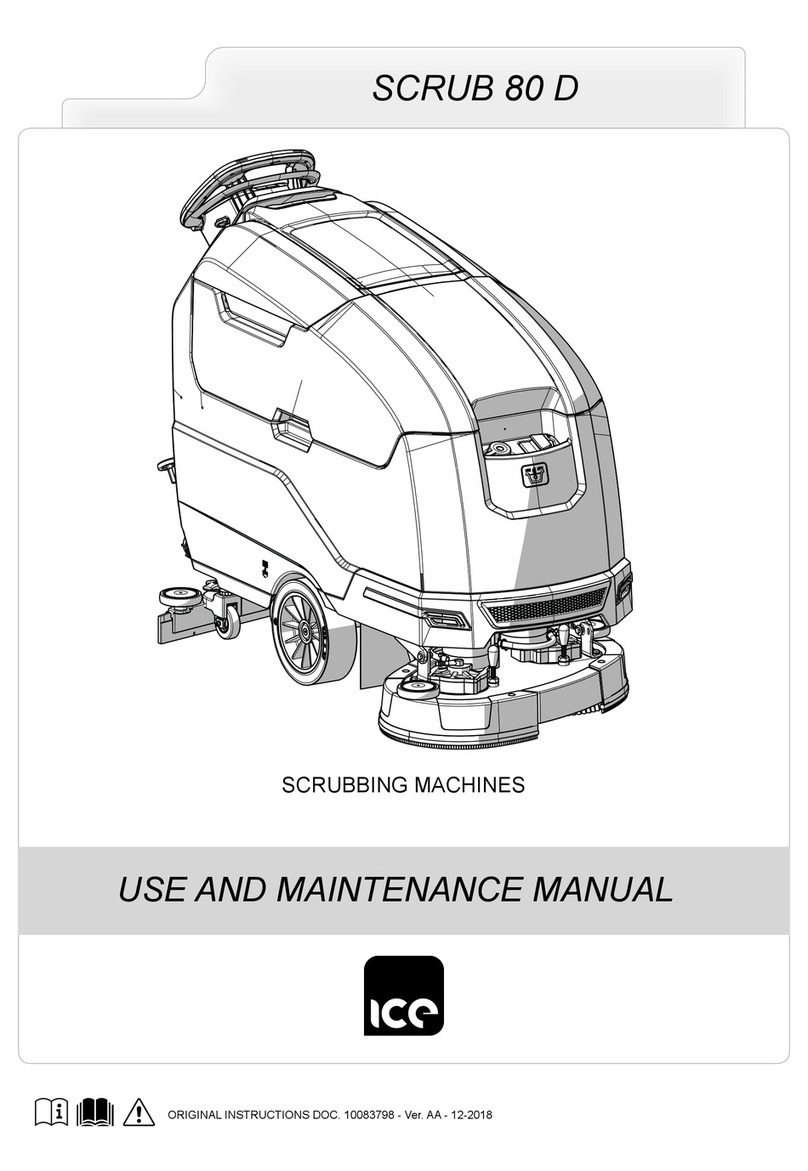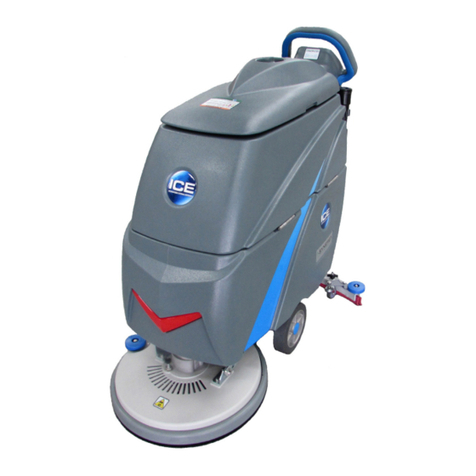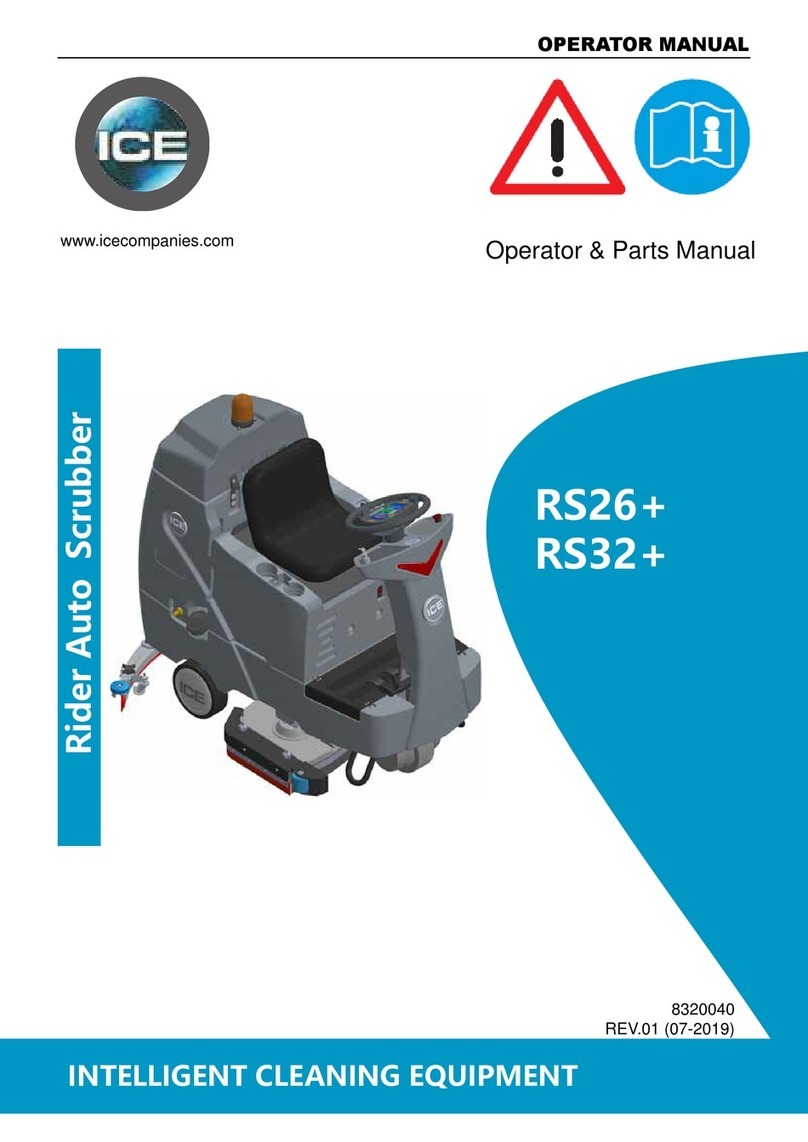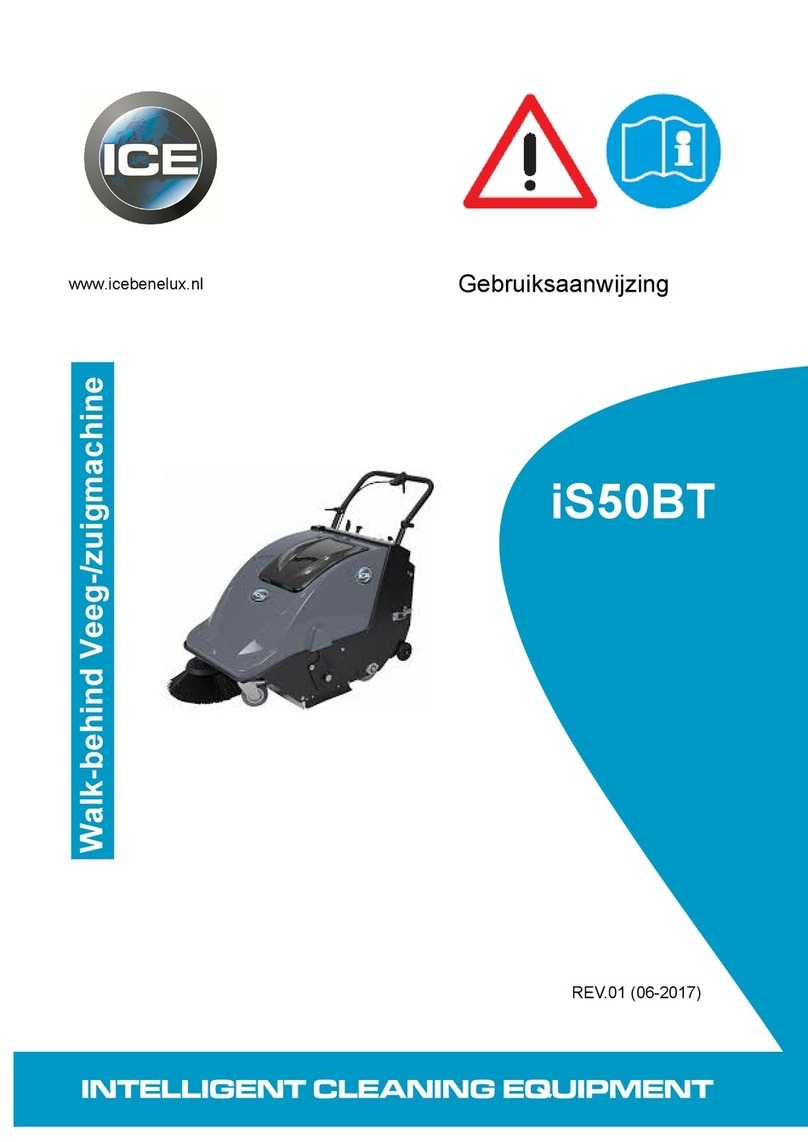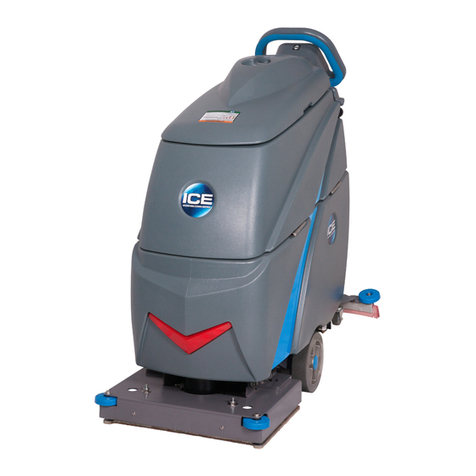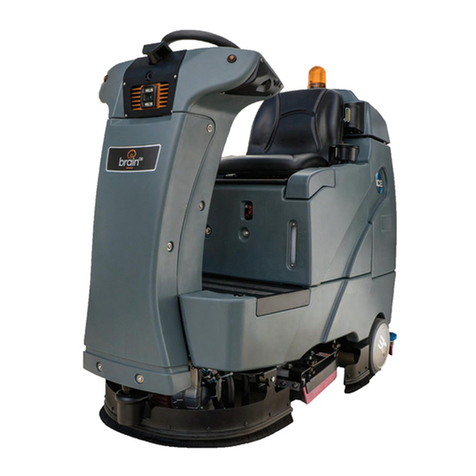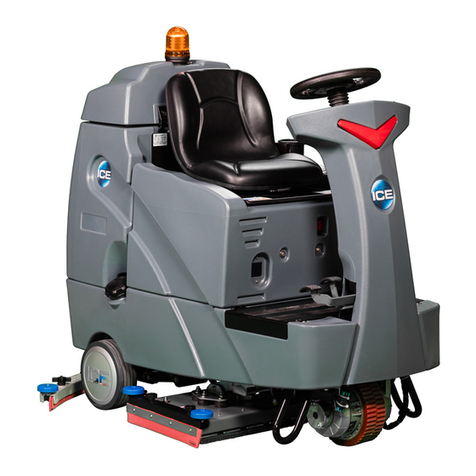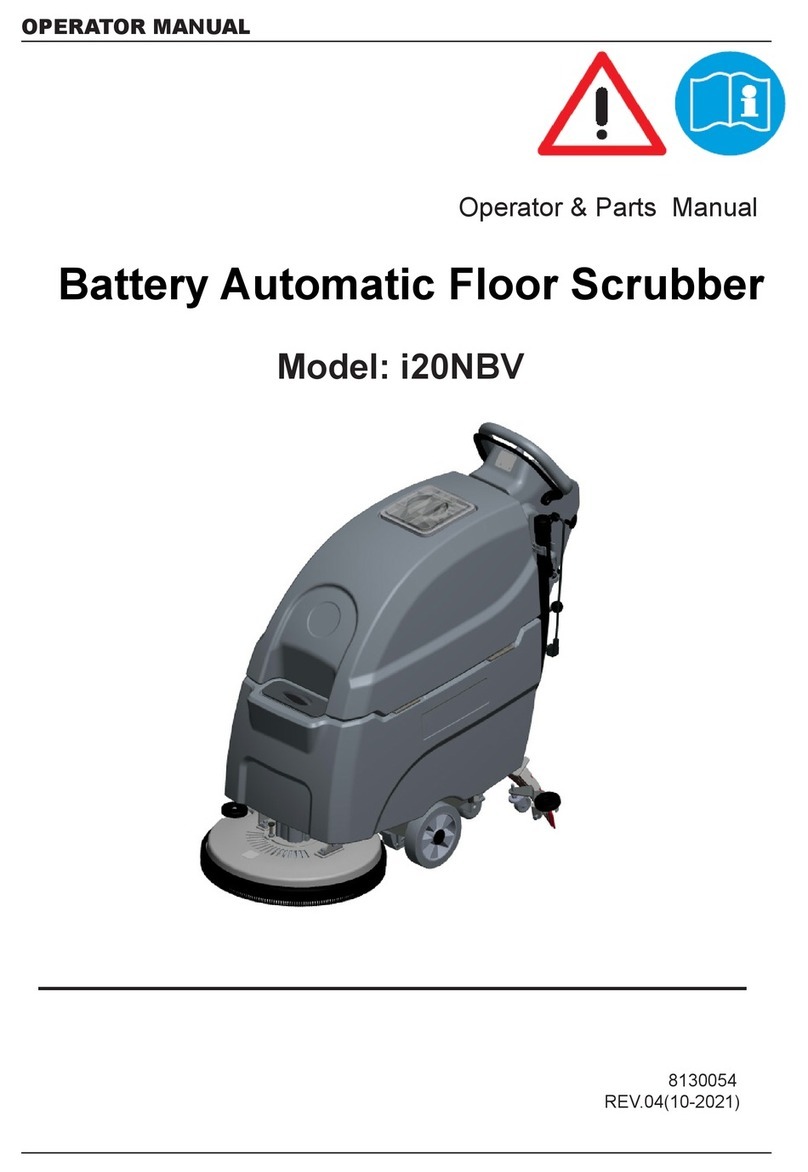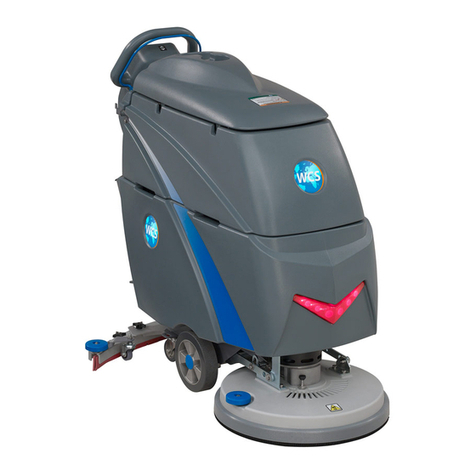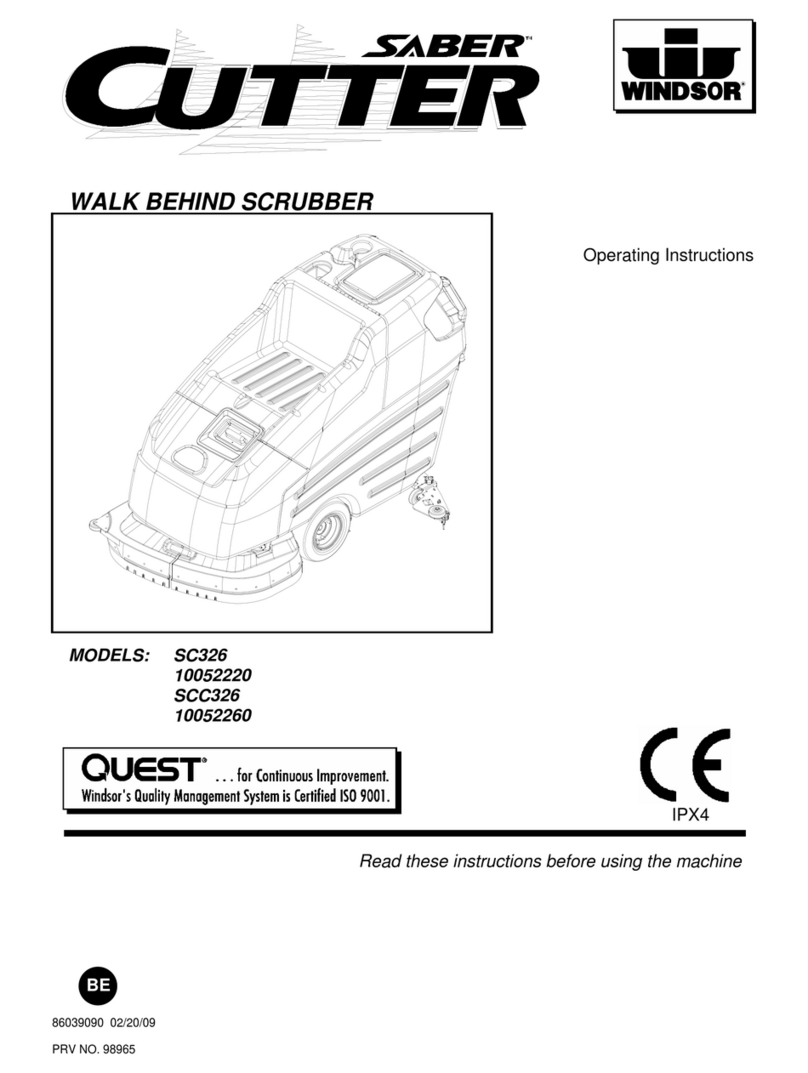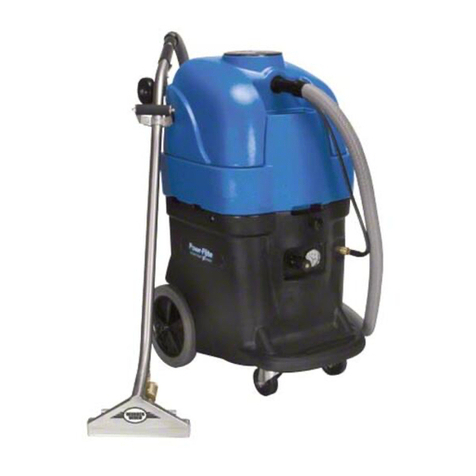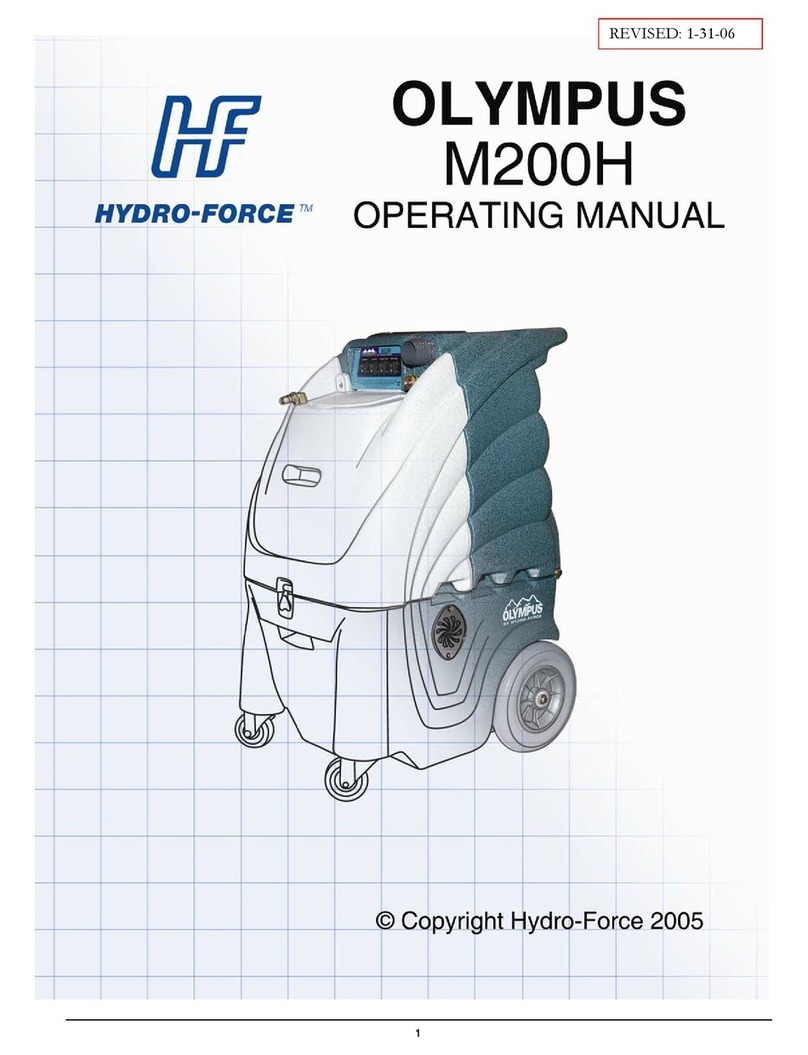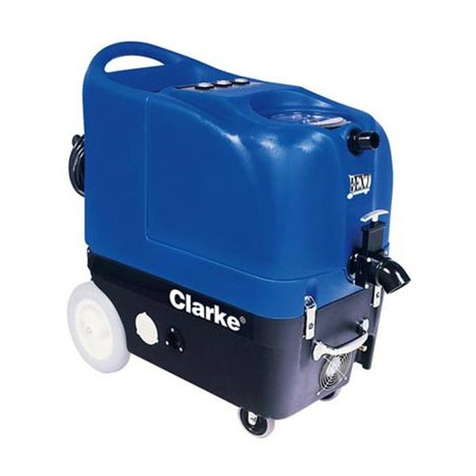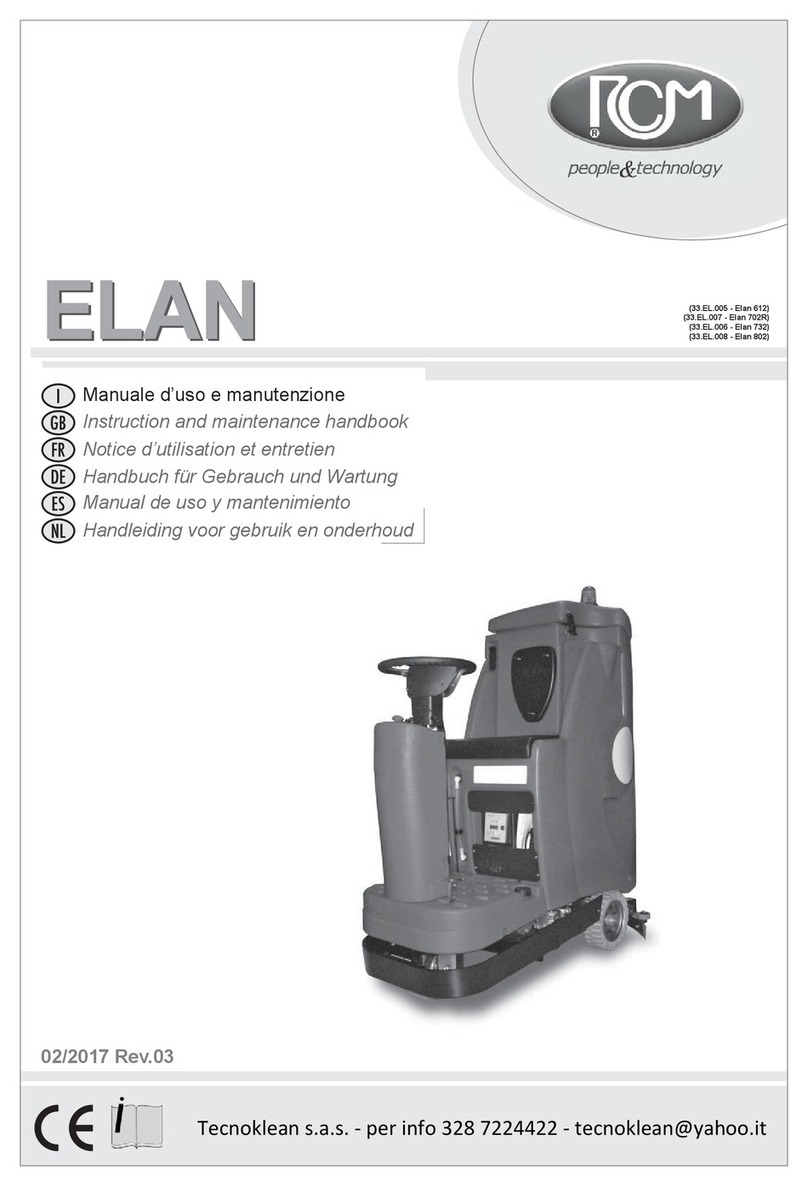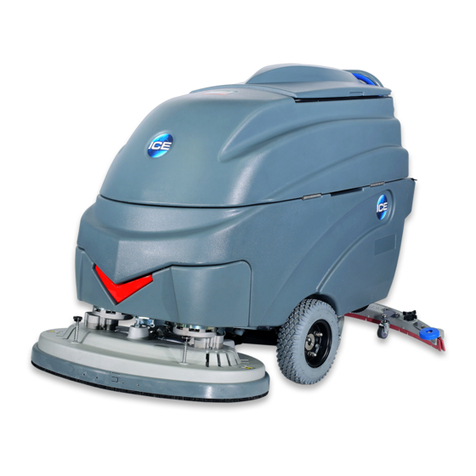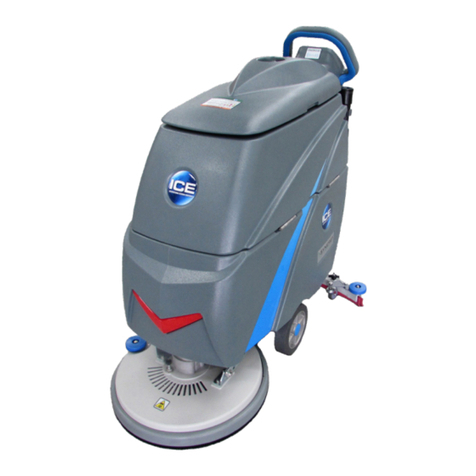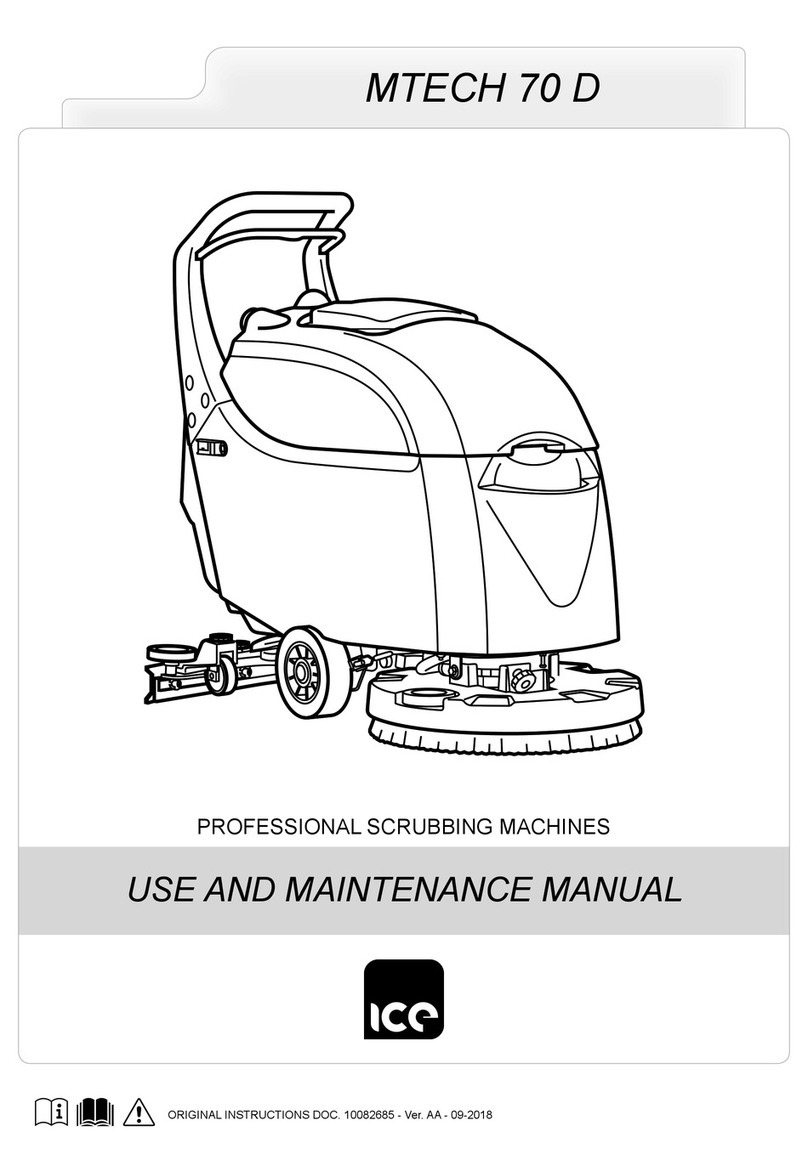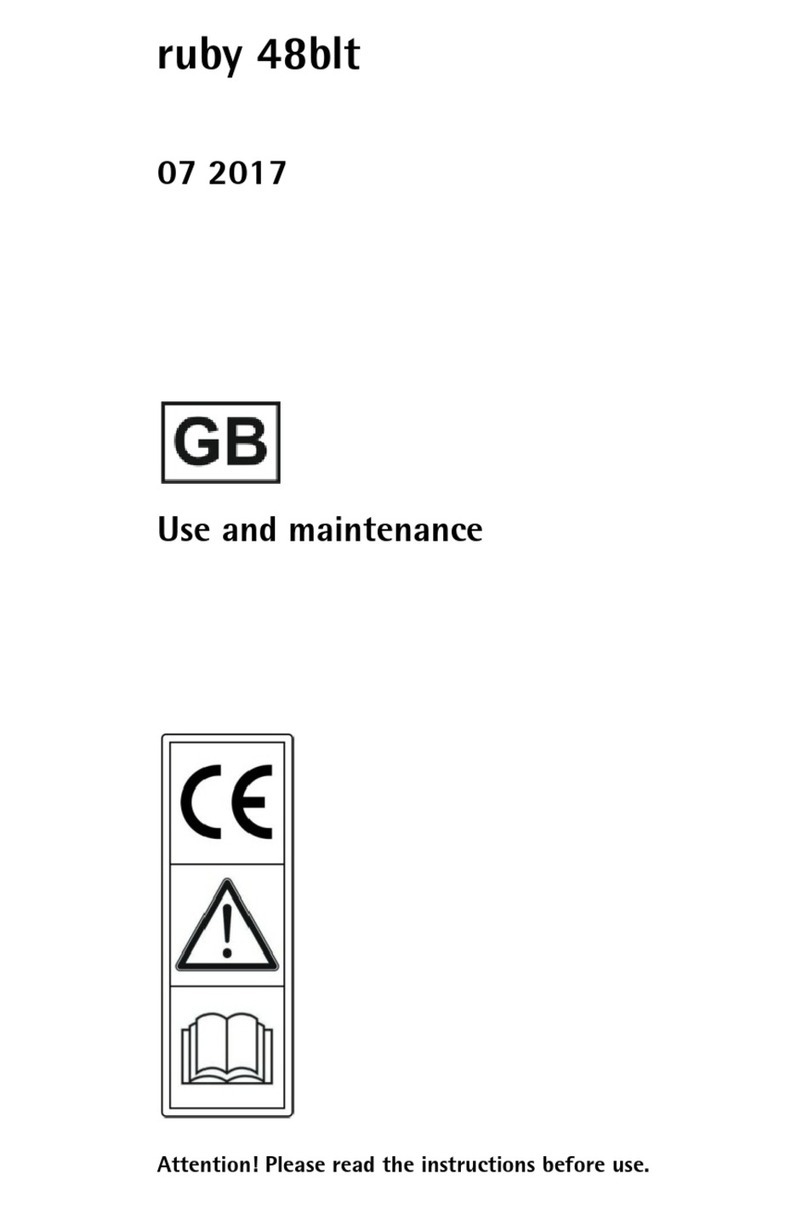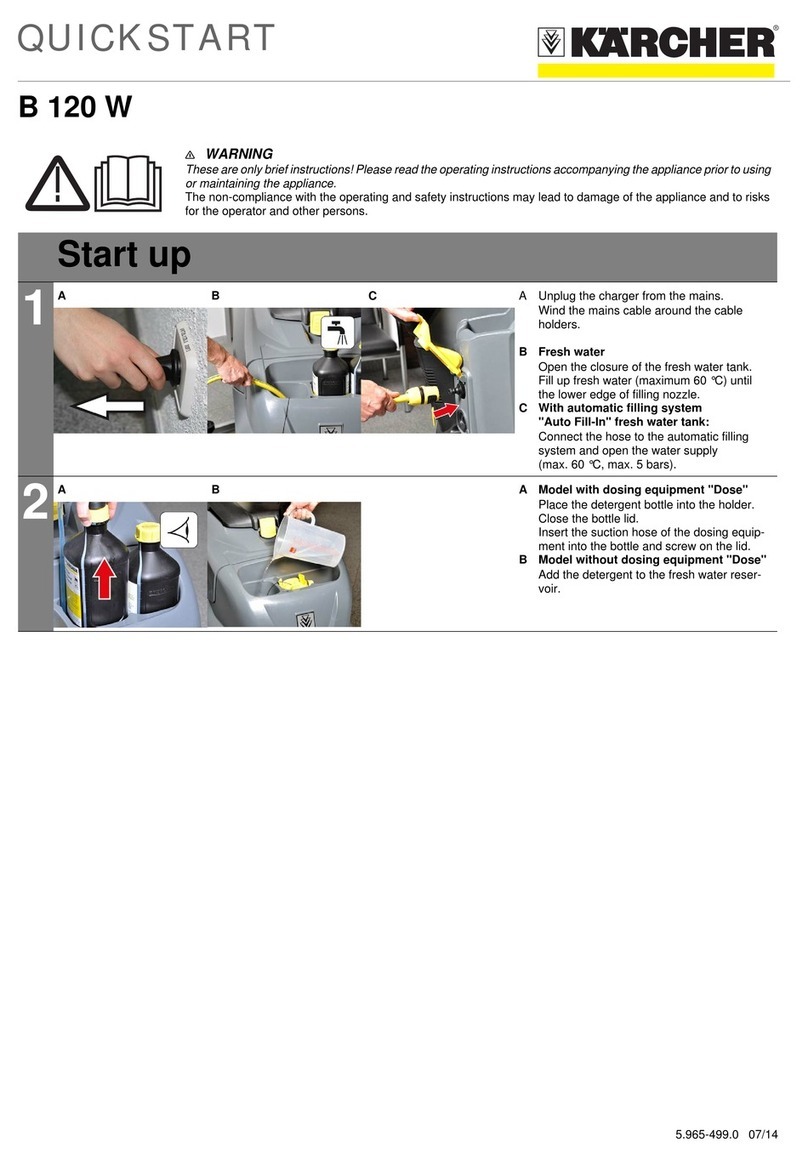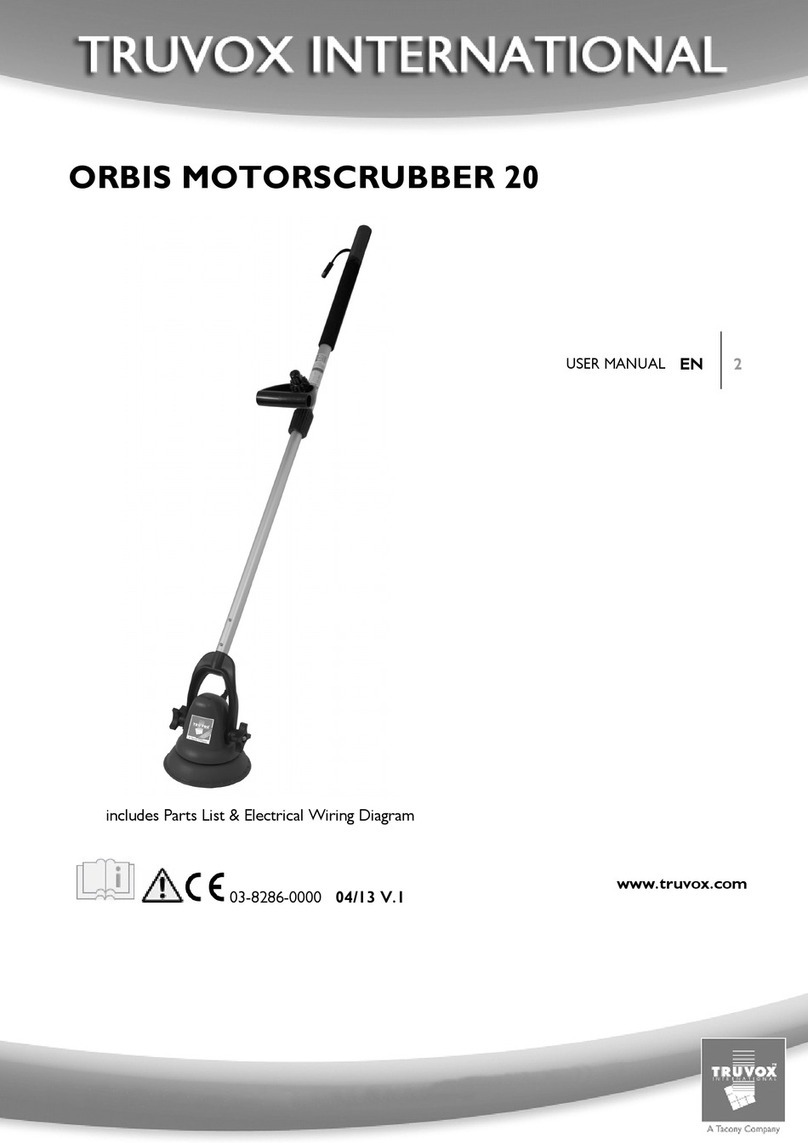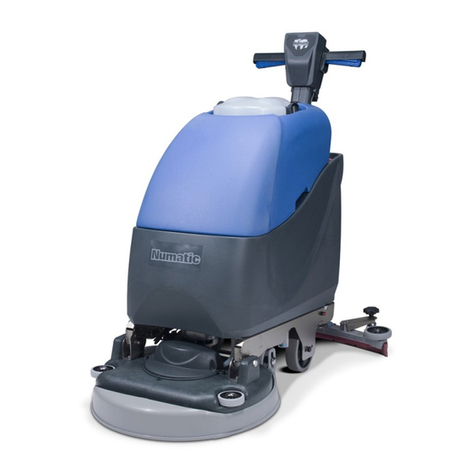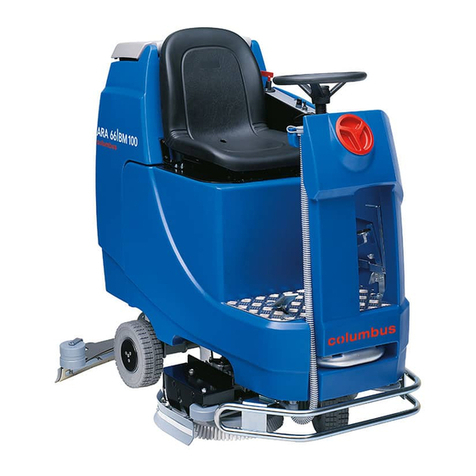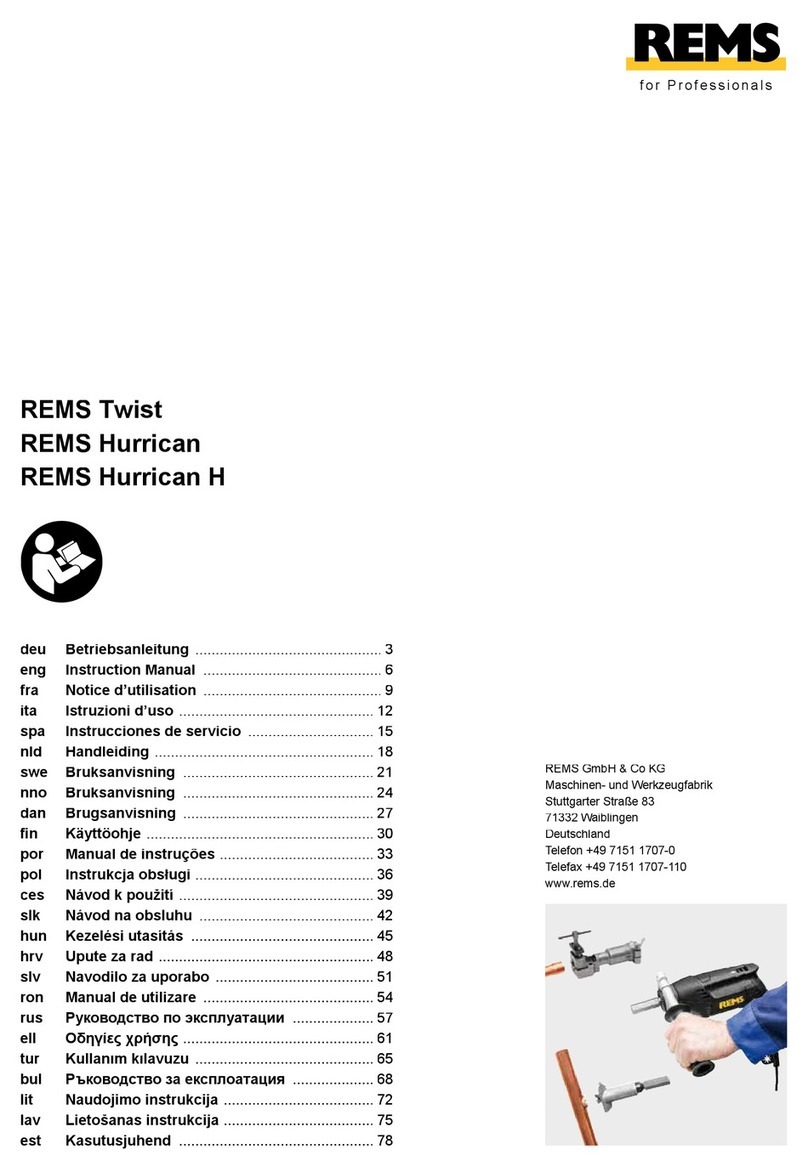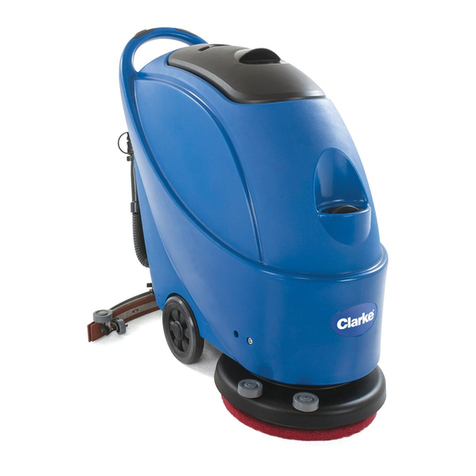
4 5
INSTALLING THE BRUSH (50C versions) ...............................................................................................................................30
ASSEMBLING THE SQUEEGEE .............................................................................................................................................31
FILLING THE SOLUTION TANK WITH WATER ...................................................................................................................31
DETERGENT SOLUTION ........................................................................................................................................................32
PREPARING TO WORK ....................................................................................................................33
WORK ................................................................................................................................................34
STARTING WORK (50D versions)............................................................................................................................................34
SCRUBBING AND DRYING (50D versions).............................................................................................................................34
SCRUBBING WITHOUT DRYING (50D versions)....................................................................................................................35
DRYING (50D versions)............................................................................................................................................................35
STARTING THE WORK ACTIVITIES (traction version) ...........................................................................................................36
SCRUBBING AND DRYING (traction version) .........................................................................................................................36
SCRUBBING WITHOUT DRYING (traction version) ................................................................................................................37
DRYING WITHOUT SCRUBBING (traction version) ................................................................................................................38
REGULATING THE DETERGENT SOLUTION ........................................................................................................................39
FORWARD SPEED REGULATION (50D versions)..................................................................................................................39
ADJUSTING THE FORWARD SPEED (traction version).........................................................................................................39
REVERSE MOVEMENT (traction version) ...............................................................................................................................40
EMERGENCY SWITCH (traction version)................................................................................................................................40
ECO-MODE (traction version) ..................................................................................................................................................41
OVERFLOW DEVICE (50D version) ........................................................................................................................................41
OVERFLOW DEVICE (traction version) ...................................................................................................................................41
AT THE END OF THE WORK............................................................................................................42
MAINTENANCE.................................................................................................................................43
RECOMMENDED MAINTENANCE OPERATIONS .................................................................................................................43
CHECKING AND CLEANING THE RECOVERY TANK............................................................................................................43
CHECKING AND CLEANING THE SOLUTION TANK CAP-FILTER .......................................................................................44
CHECKING AND CLEANING THE DEBRIS HOPPER (50C versions)....................................................................................44
CHECKING AND CLEANING THE SQUEEGEE UNIT ............................................................................................................45
ADJUSTING THE SQUEEGEE UNIT.......................................................................................................................................46
CHECKING AND CLEANING THE RECOVERY TANK FILTER-FLOAT ..................................................................................47
CHECKING AND CLEANING THE SOLUTION TANK .............................................................................................................47
BRUSH CONTROL AND MAINTENANCE (SCRUB 50D)........................................................................................................48
BRUSH CONTROL AND MAINTENANCE (SCRUB 55-65 without PM) ..................................................................................48
BRUSH CONTROL AND MAINTENANCE (SCRUB 55-65 with PM) .......................................................................................49
CHECKING AND CLEANING THE BRUSH (50C versions).....................................................................................................50
CHECKING AND CLEANING THE VACUUM HOSE ...............................................................................................................50
CLEANING THE WATER SYSTEM (50D versions)..................................................................................................................51
CLEANING THE WATER SYSTEM (traction versions) ............................................................................................................52
TROUBLESHOOTING.......................................................................................................................54
DISPOSAL .........................................................................................................................................56
CHOOSING AND USING BRUSHES ................................................................................................56
EC DECLARATION OF CONFORMITY ............................................................................................58
